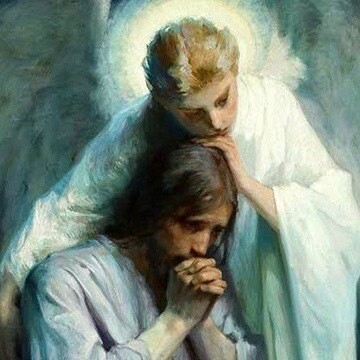The following is an account by Orson F. Whitney published in the Improvement Era in January 1926.
One night I dreamed—if dream it may be called—that I was in the Garden of Gethsemane, a witness of the Savior’s agony. I saw Him as plainly as I see this congregation. I stood behind a tree in the foreground, where I could see without being seen. Jesus, with Peter, James, and John, came through a little wicket gate at my right. Leaving the three Apostles there, after telling them to kneel and pray, He passed over to the other side, where He also knelt and prayed. It was the same prayer with which we are all familiar: “O my Father, if it be possible, let this cup pass from me: nevertheless not as I will, but as thou wilt” ([see] Matthew 26:36–44; Mark 14:32–41; Luke 22:42).
As He prayed the tears streamed down His face, which was toward me. I was so moved at the sight that I wept also, out of pure sympathy with His great sorrow. My whole heart went out to Him. I loved Him with all my soul and longed to be with Him as I longed for nothing else.
Presently He arose and walked to where the Apostles were kneeling—fast asleep! He shook them gently, awoke them, and in a tone of tender reproach, untinctured by the least suggestion of anger or scolding, asked them if they could not watch with Him one hour. There He was, with the weight of the world’s sin upon His shoulders, with the pangs of every man, woman, and child shooting through His sensitive soul—and they could not watch with Him one poor hour!
Returning to His place, He prayed again and then went back and found them again sleeping. Again He awoke them, admonished them, and returned and prayed as before. Three times this happened, until I was perfectly familiar with His appearance—face, form, and movements. He was of noble stature and of majestic mien—not at all the weak, effeminate being that some painters have portrayed—a very God among men, yet as meek and lowly as a little child.
All at once the circumstance seemed to change, the scene remaining just the same. Instead of before, it was after the Crucifixion, and the Savior, with those three Apostles, now stood together in a group at my left. They were about to depart and ascend into heaven. I could endure it no longer. I ran out from behind the tree, fell at His feet, clasped Him around the knees, and begged Him to take me with Him.
I shall never forget the kind and gentle manner in which He stooped and raised me up and embraced me. It was so vivid, so real, that I felt the very warmth of His bosom against which I rested. Then He said: “No, my son; these have finished their work, and they may go with me, but you must stay and finish yours.” Still I clung to Him. Gazing up into His face—for He was taller than I—I besought Him most earnestly: “Well, promise me that I will come to You at the last.” He smiled sweetly and tenderly and replied: “That will depend entirely upon yourself.” I awoke with a sob in my throat, and it was morning.
Lead image Agony in the Garden by Frans Schwartz from Wikimedia Commons


